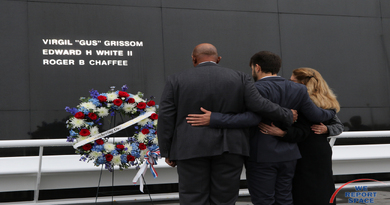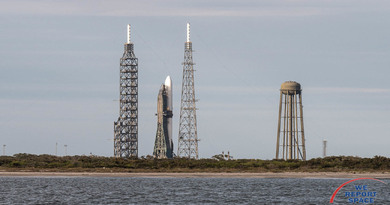Launching a Pegasus Rocket from a Jet
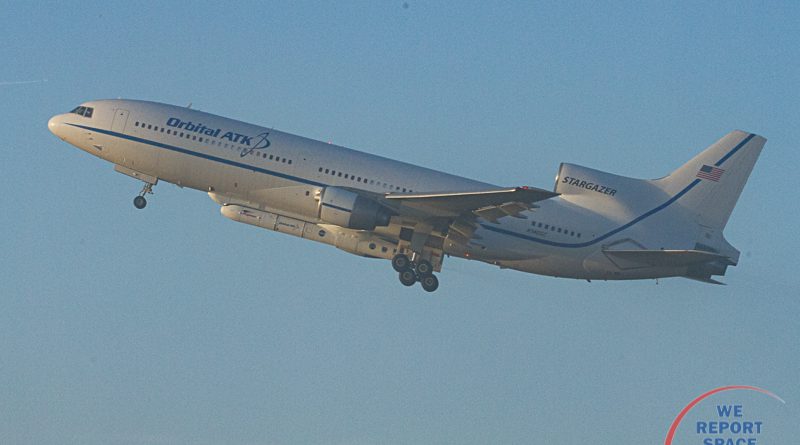
CAPE CANAVERAL FL: What is it like to be flying a jet just 1,500 feet away from an igniting rocket? Orbital ATK has flown their mobile L1011 Pegasus rocket-launching plane back to Cape Canaveral for the first time since a pair of launches in 2003. I had a chance to meet the flight crew and ask how the aircraft evades the Pegasus rocket.
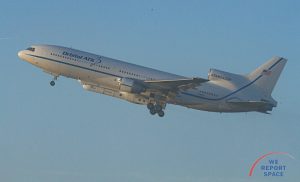
The Pegasus rocket system was developed by Orbital ATK to provide cost-effective access to space for the small satellite community. In this case, a small satellite is anything up to 1,000 pounds headed to Low-Earth Orbit. Their Stargazer jet is a modified Lockheed L1011 (pronounced L-Ten-Eleven) that is the last L1011 in operation. Back in the 1970's, Eastern Airlines debuted the L1011 as a wide-body jet for carrying up to 400 passengers on transcontinental routes. Today, the last flying L1011 has just 19 seats, but added a three-stage solid rocket underneath the fuselage. The rocket has three fins, one of which is inserted into a slot in the fuselage of the airplane.
Taking a rocket as carry on luggage
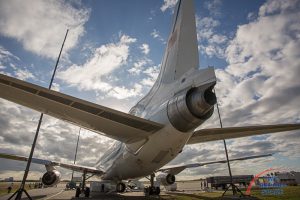
On Wednesday December 14 2016, the flight crew will depart from the Skid Strip at Cape Canaveral Air Force Station. They will take about one hour to fly to 39,000 feet to a drop box located 50 miles due east of Daytona Beach. If weather conditions are right, they will release the Pegasus rocket carrying the CYGNSS satellite constellation. Five seconds later, a crew member sitting at a launch console aft of the cockpit will ignite the rocket.
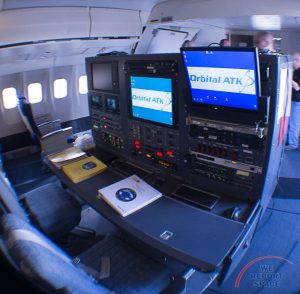
My first reaction: "You are going to be five seconds away from a rocket that is igniting?" The crew explained that they can safely get to about 1500 feet away from the rocket:
First, the rocket starts descending with an acceleration of 32 feet per second per second. In five seconds, that means the rocket drops 400 feet.
Second, you have an 18,500 kg rocket that is suddenly released from a 110,000 kg airplane. Assuming equal thrust before and after the weight is dropped, the aircraft will rise anywhere from 800 to 1000 feet in altitude. The pilots also turn to the left to get away from the center line of the rocket.
Third, the L1011 Stargazer is still under propulsion and keeps moving forward at Mach 0.82. The Pegasus rocket encounters drag in the atmosphere and begins slowing down to Mach 0.79. The airplane is now moving forward of the rocket. That's right, the rocket will be about 150 feet behind the Stargazer when they light the engine.
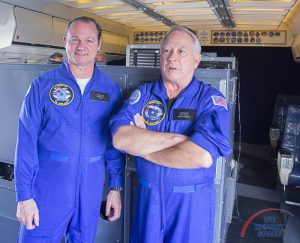
From the Flight Deck
Listen as Flight Engineer Bob Taylor describes the experience:
"When we release the rocket, you instantly feel the airplane ascending 1000 feet. As the rocket ignites, it passes underneath the plane and you can definitely feel the rumble as the rocket passes underneath you. The rocket then rises in front of the airplane and you can watch the entire first and second stages from the cockpit. If it is a night launch, you can even faintly make out the third stage igniting."
"We are about 1,500 feet away from the rocket when it ignites. The company says we have to be 500 feet from the rocket in the case of an anomaly. But, let's face it, a solid rocket motor is essentially a bomb. You want to be as far away from the bomb as you can."
Taylor also notes that they are manually flying the airplane during the launch, as the autopilot would have no ability to handle the unusual forces such as suddenly dropping 14% of the mass of the aircraft+rocket.
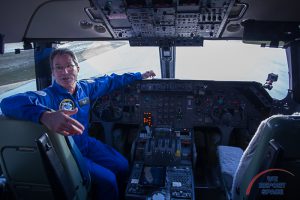
Facts on the Flight Plan for the CYGNSS mission
- The Pegasus rocket drops at t=0
- Stage 1 ignition happens at t=00:05 at an altitude of 12.3km
- Max Q is 1,413 psf at t=0:00:36
- Stage 1 burnout happens at t=0:01:17 at an altitude of 53.5 km
- Stage 1 separation at t=0:01:33 at an altitude of 70.5 km
- Stage 2 ignition happens at t=0:01:34 at an altitude of 71.4 km
- The payload fairing is jettisoned at t=0:02:12 at an altitude of 115.9 km
- Stage 2 burnout is at t=0:02:48 at 174.3 km
- Stage 2 separation at t=0:06:37 at 478.1 km
- Stage 3 ignition at t=0:06:48 at 468.8 km
- Stage 3 burnout at 0:07:56 at 512.4 km
The eight satellites are then deployed in pairs. The first pair is released at t=0:12:56 at an altitude of 510.5 km. The last pair is released at t=0:14:26 at an altitude of 509.9 km.
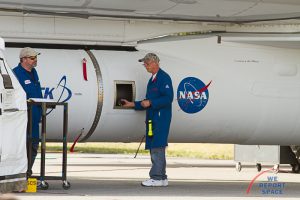
Facts About the Pegasus rocket system
- This will be the 43rd mission for the Pegasus
- The Pegasus can launch from California, Virginia, Florida, the Canary Islands and the Kwajalein Atoll in the Marshall Islands
- Pegasus is the world's first privately developed space launch vehicle
- The maiden 1990 mission marked the first all-new unmanned space launch vehicle developed in the U.S. in more than 20 years
- First winged vehicle to accelerate to eight times the speed of sound
- First air-launched rocket to place satellites into orbit using its carrier aircraft as an "air breathing reusable first stage"
- This rocket is named Matthew. The rocket is carrying spacecraft designed to monitor hurricanes and this fall Hurricane Matthew made landfall at Cape Canaveral.
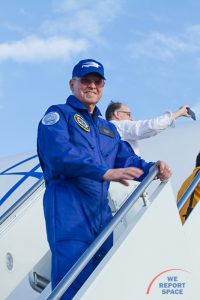
(Photo credit for all images in this article: Bill Jelen / We Report Space)

Stunning, full color photo book covering every east coast launch spanning 2014-2015, including the first-ever powered landing of a SpaceX Falcon 9 rocket.
More Info


